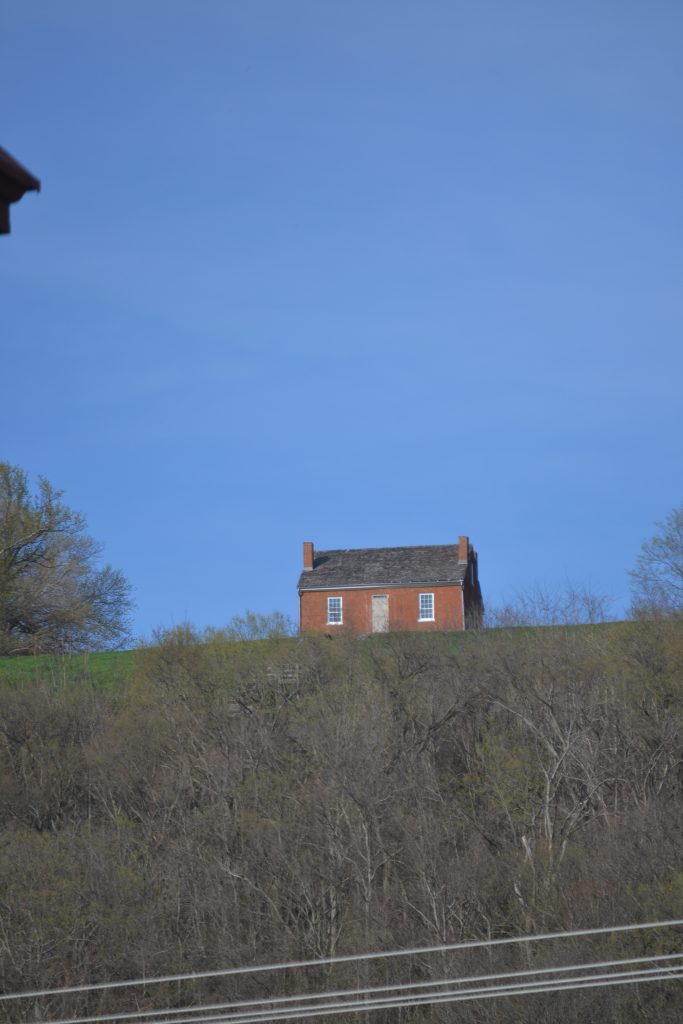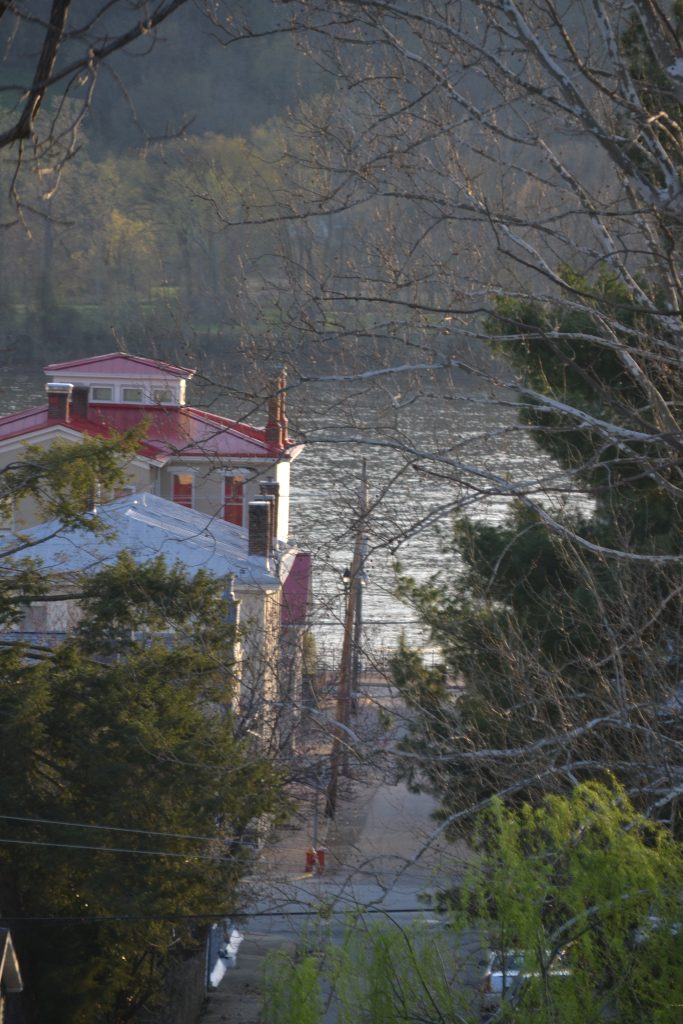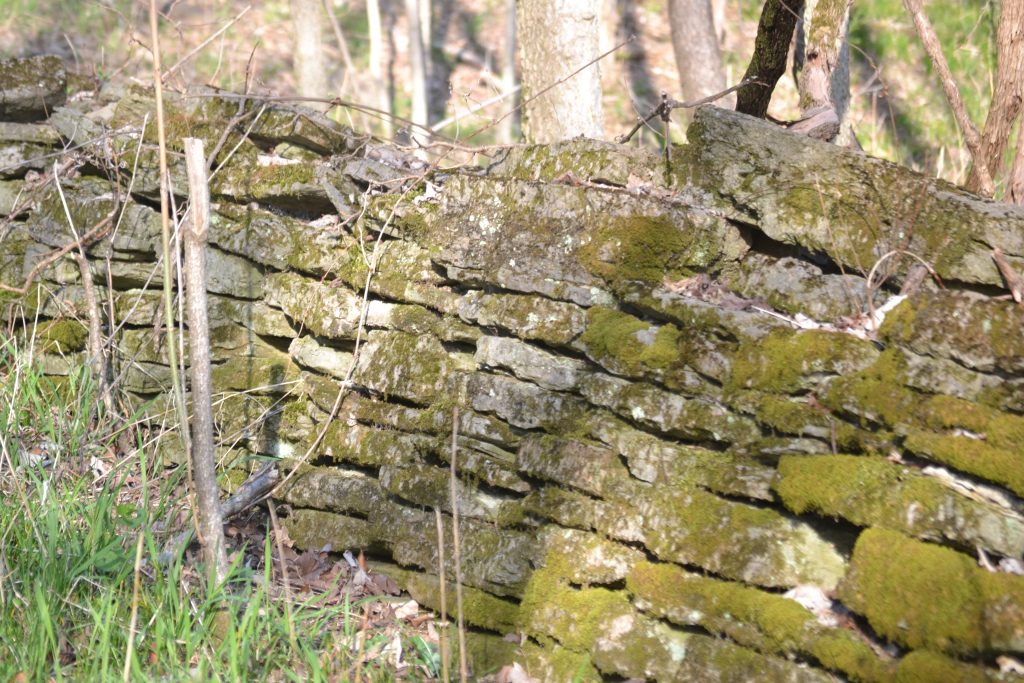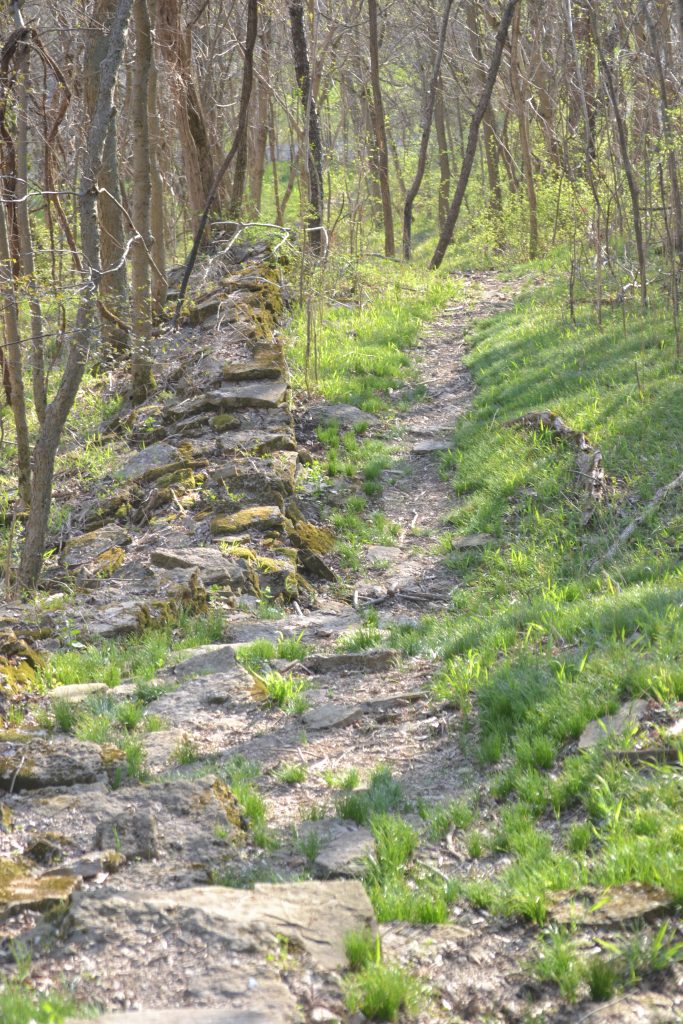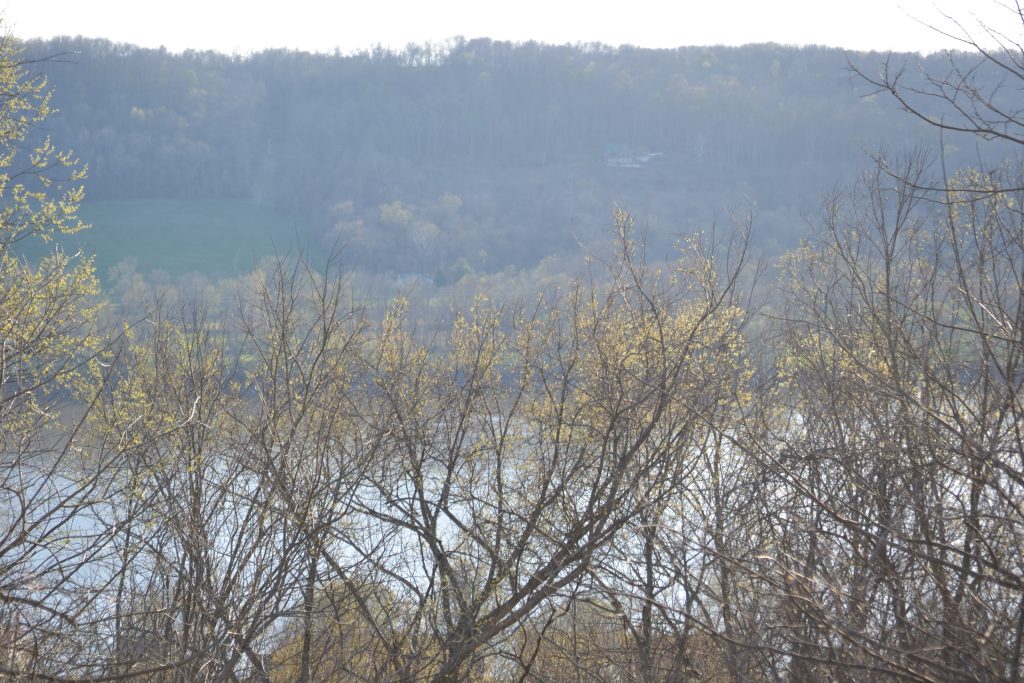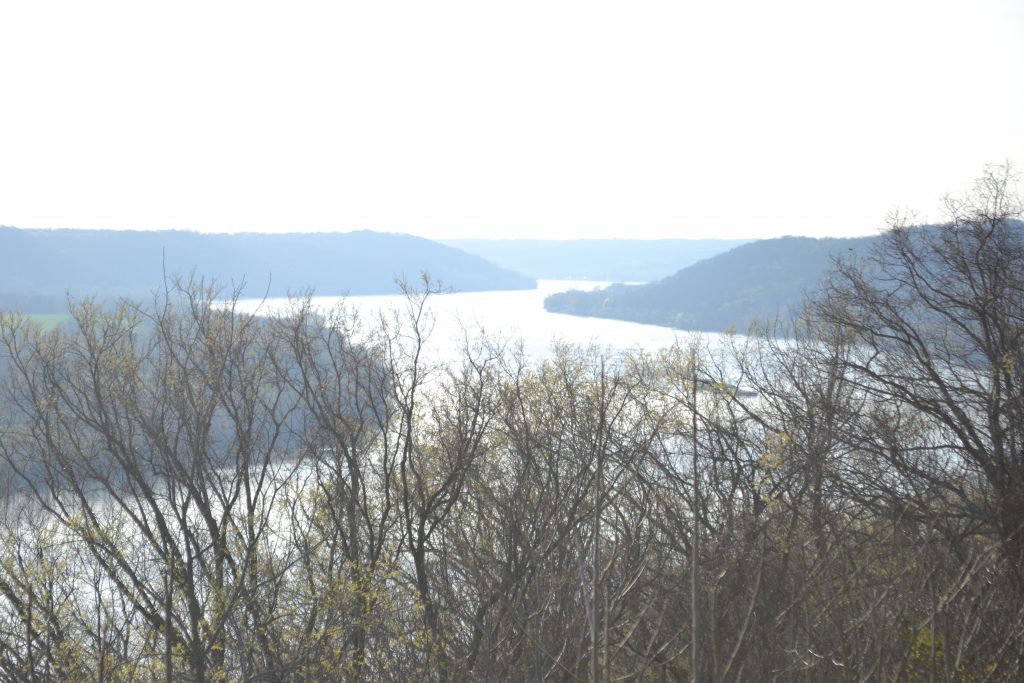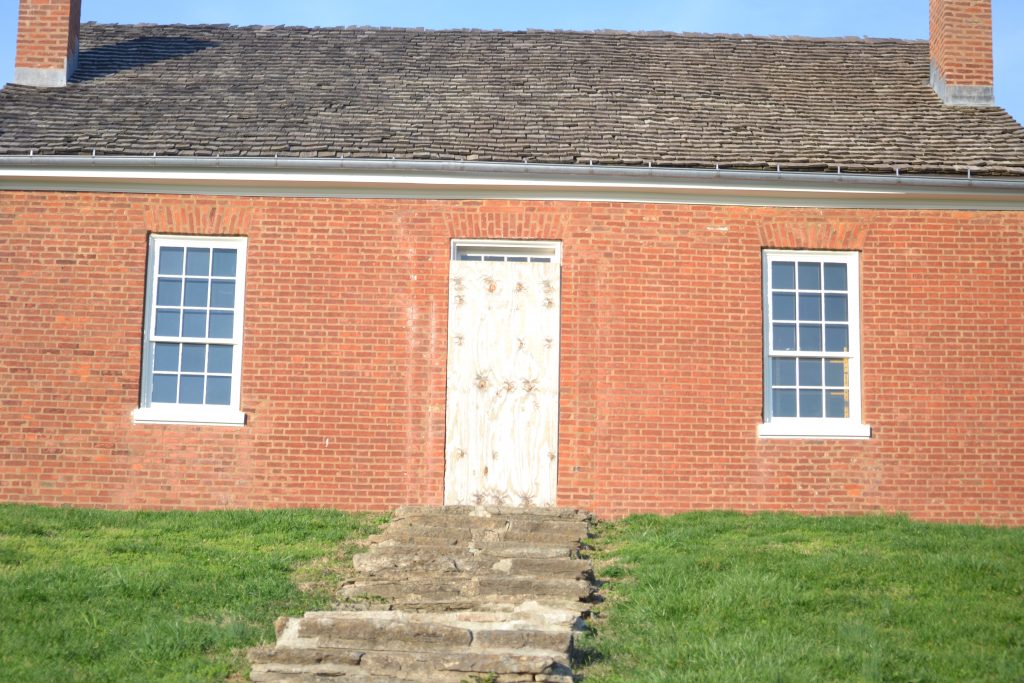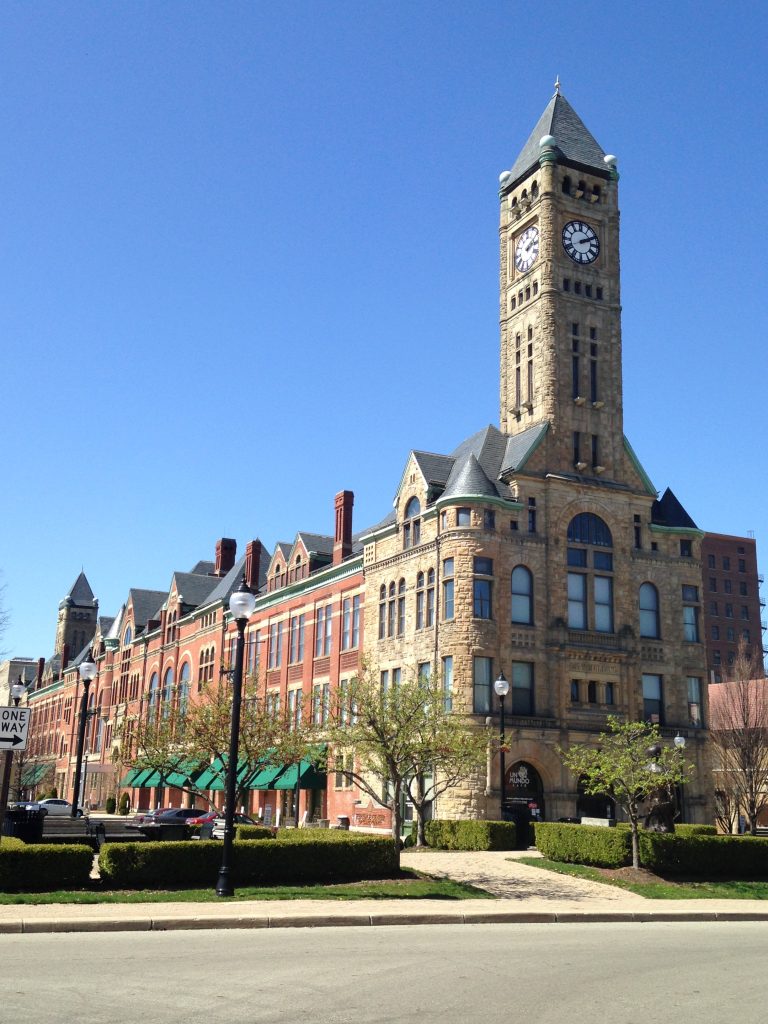
Arriving at the The Clark County Heritage Center, I was excited to learn more about the history of Springfield, Ohio. This city was once my home until high school when I left in search of adventure. I decided to return home to start a business and was happy to become reacquainted with all of the familiar places that I once remembered. They say you always come back to your roots.
After grabbing a cup of coffee at Un Mundo Cafe, I arrived at the Center to explore its museum of historical exhibits. Built in the late 1800s, this Richardsonian Romanesque beauty was home to several public offices until it was abandoned for a number of years, reopening in April 2001. From City Hall to the Police Department, the Center is now a museum as well as retail space for several local businesses.
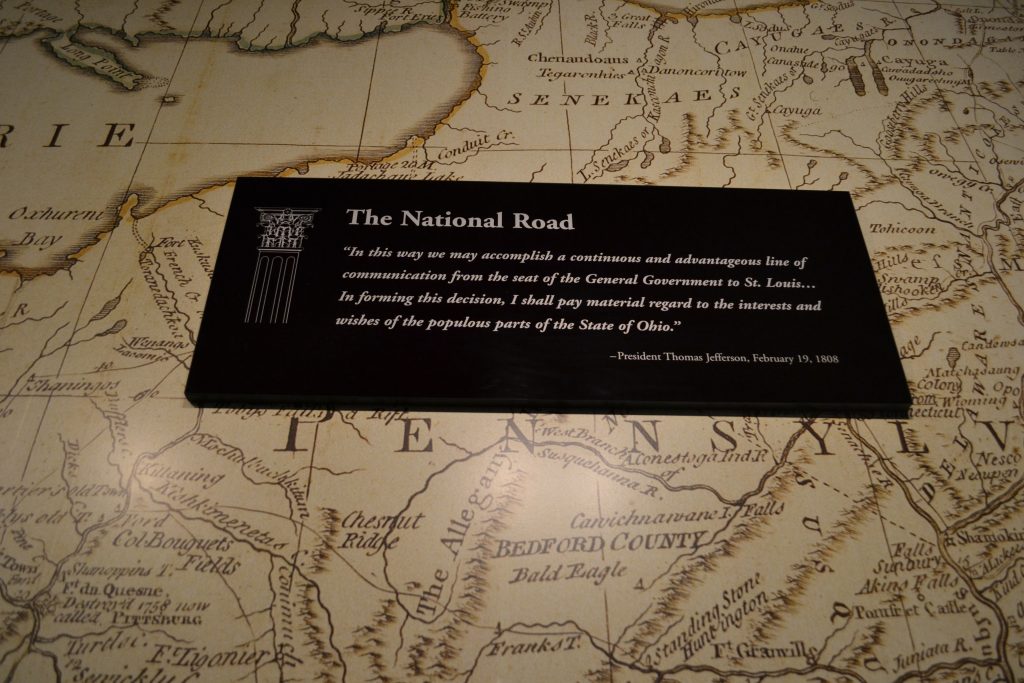
Easily accessible from the coffee shop, I entered the museum where I was surrounded by pamphlets and books on several shelves in the center lobby. After signing in, I explained to the attendant that my reason for visiting was to write about the museum. He suggested a couple of books to help with my research and I was eager to begin learning more about Springfield, once known as “The City at The End of the Road.”
Stepping into the exhibit, I began my tour standing in front of a map of state route 40. From here, I would soon learn the importance of the National Road as well as its significance and impact on Springfield.
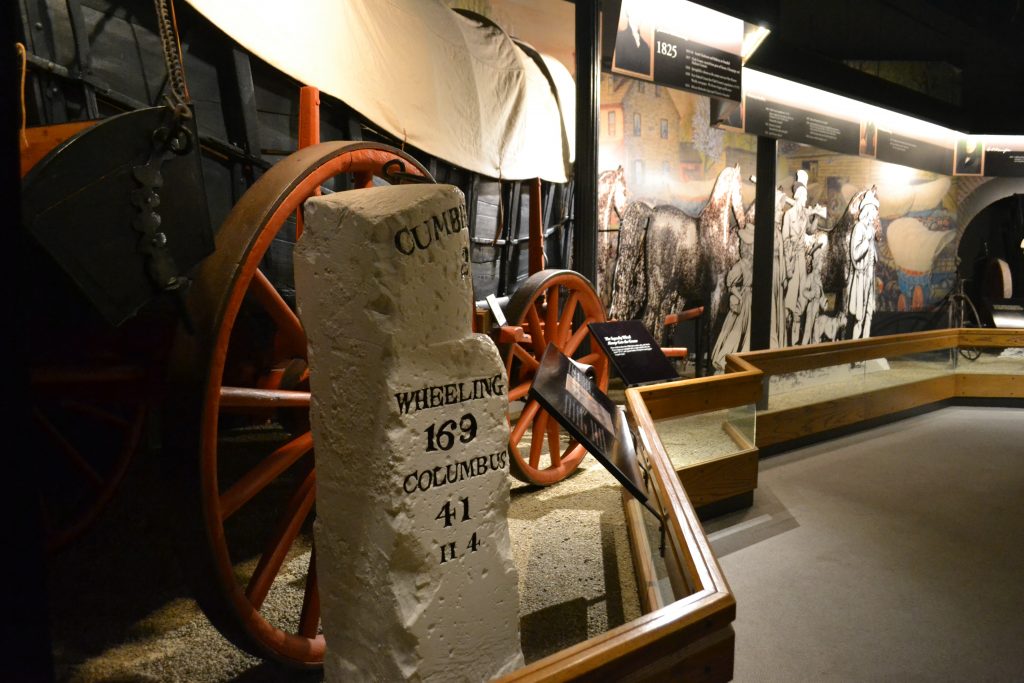
The National Road was first proposed by George Washington to connect the east coast and west coast of the United States. It took several years to complete, and with the help of Thomas Jefferson, they finally broke ground in 1808. The project first began in the small town of Cumberland, Maryland, as the route continued to evolve over the years.
As the road progressed, it reached Columbus, Ohio in 1830 and continued towards Springfield with the financial aid of local resident Pierson Spinning. Mile markers made of stone were strategically placed to document the distance traveled from Cumberland where some of these markers still remain.
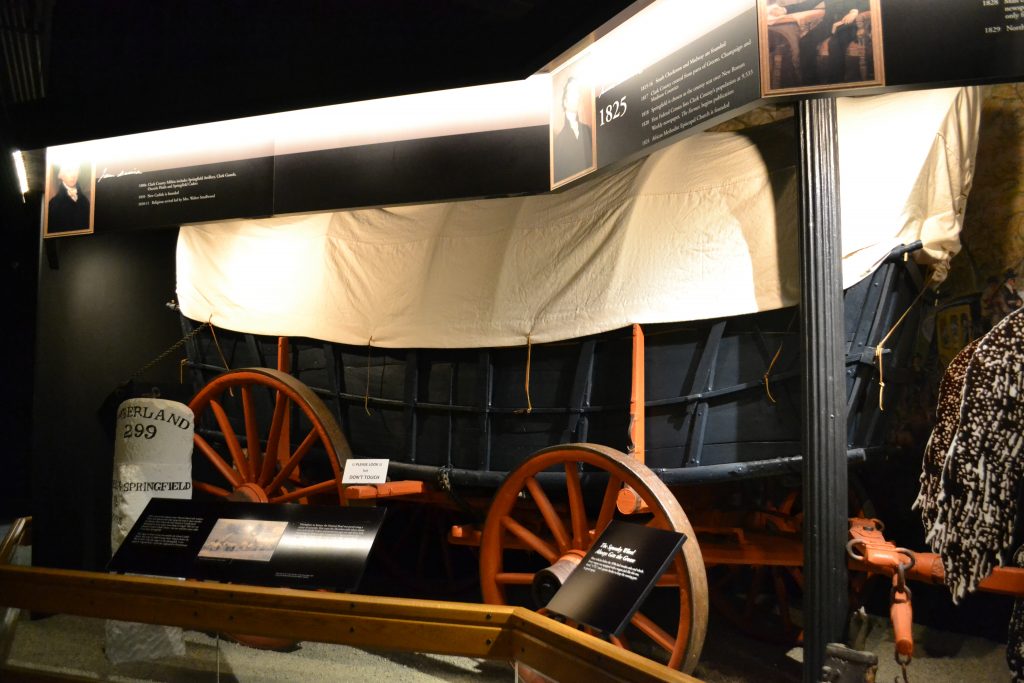
Wagons were the primary source of transport for adventurous families leaving the east coast for a future out west. The museum displays the wagon of David Crabill who was one of the early settlers to reach Clark County and make this area his home in 1808.
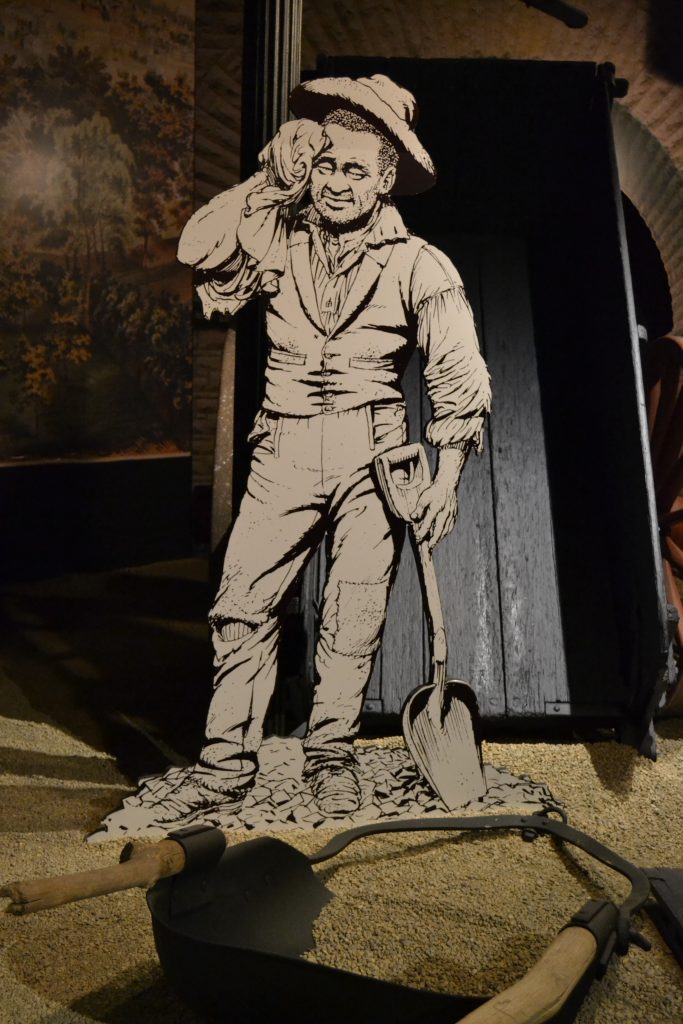
Today, the National Road is paved with blacktop, but at its inception, small stones marked its path. As the roadway reached Clark County, brick was laid throughout the streets of Springfield and later continued to Bellefontaine with the use of concrete. Without further government financing, the National Road would end in Springfield in 1836, where it became know as the city at “the end of the road.” As the progression stalled, many families settled in Springfield doubling its census from 510 to 1080 residents.
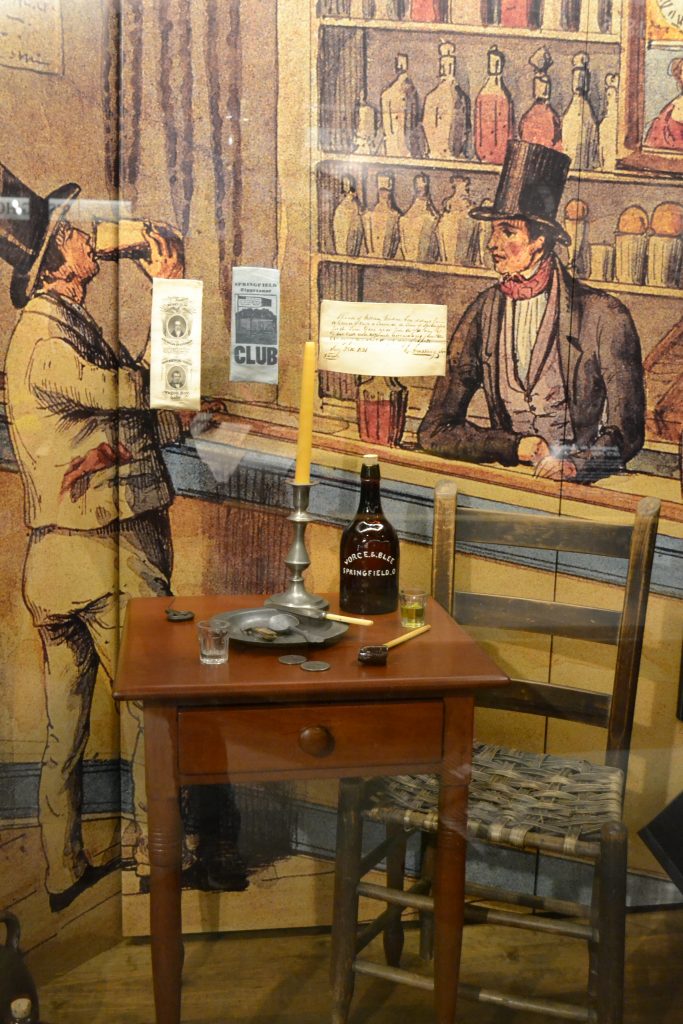
The National Road encouraged a booming business along its route with the start of several taverns as well as bed and breakfasts. Over the years, the establishment of small towns in Clark County would help Springfield grow as a city of wealth and industry.
In 1844, Wittenberg College moved from Wooster to Springfield and the city became incorporated six years later. The addition of six gas lights downtown and the production of farm equipment put Springfield in the spotlight for industry.
Springfield also played a role in abolition, offering assistance to runaway slaves throughout the underground railroad movement. By 1832, Uncle Tom’s Cabin was published and an awareness of slavery was reaching the northerners. It was Anne Aston Warden who assisted with organizing an underground railroad association in Springfield to provide aid and safe havens for the slaves as they made their way north towards Canada.
Harriett Beecher Stowe’s book was made into a play, which was performed in Springfield. The same year, the Basey family purchased land, being the first African Americans to do so. Shortly thereafter, in 1857, local resident Udney Hyde of Mechanicsburg protected a Kentucky slave, Addison White, from being captured by US marshals.
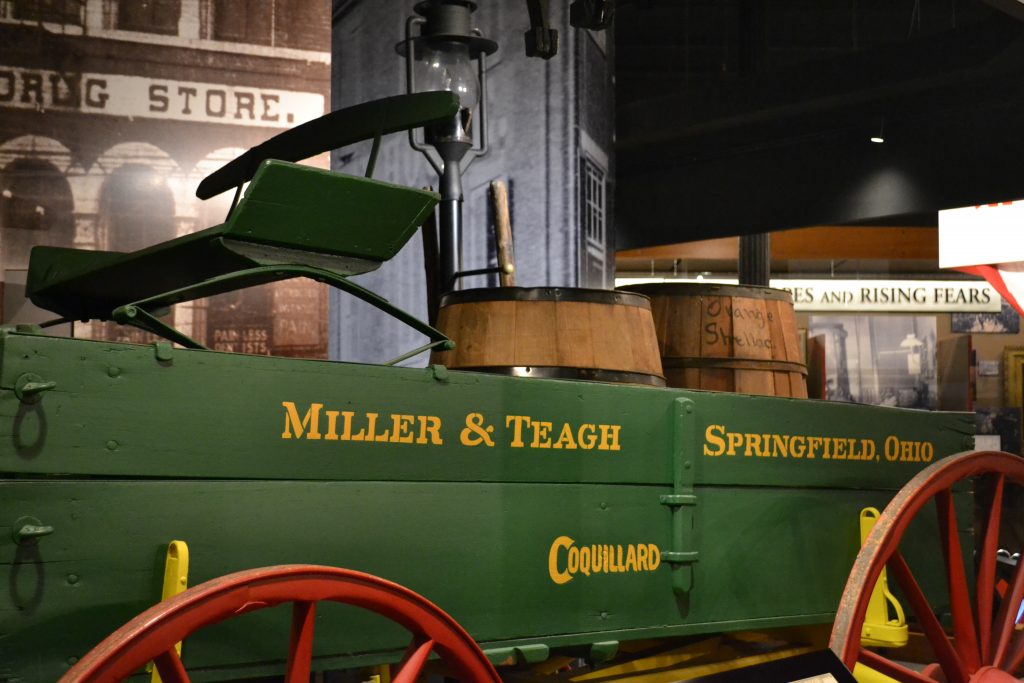
During the Civil War, Springfield factories rose up to support the war efforts by making uniforms, wagons and linseed oil. Congressman Shellabarger voted to pass the United States’ first Civil Rights Act and local families in Clark County offered their assistance by taking in former slave children. The production of farm equipment continued as Springfield entered its Golden Age in the mid 1870s.
As Springfield continued to prosper, Ulysses S. Grant was President of the United States and the city would host the Ohio State Fair. “Mother Stewart” would arrive in Springfield from Piketon to lead the temperance movement in a crusade to abolish alcohol.
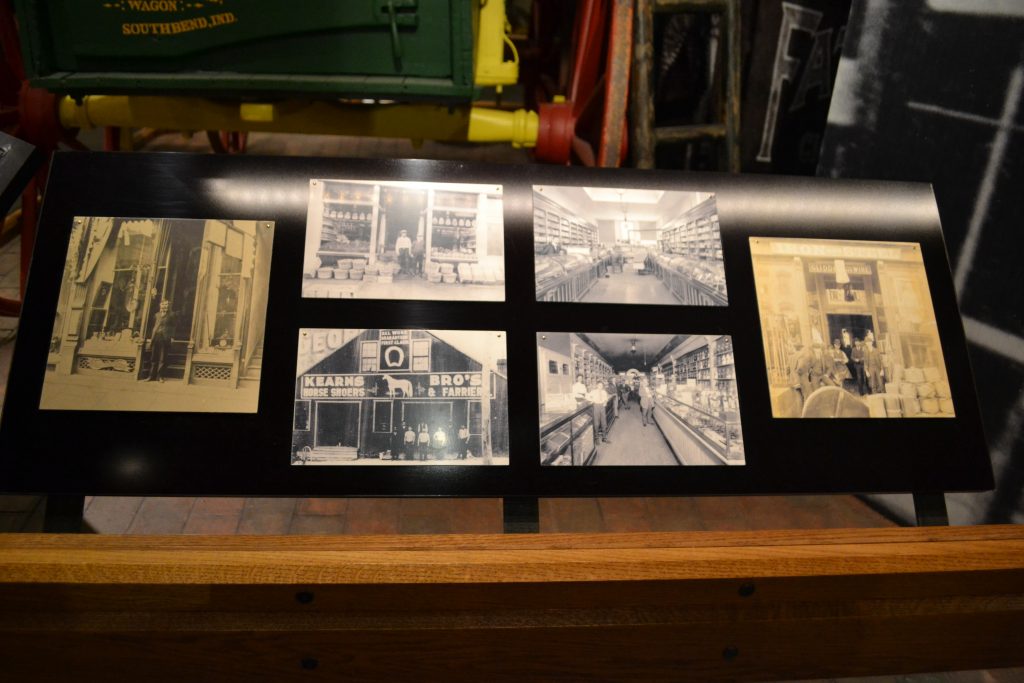
Photos depicting the industrial movement in Springfield are on display in the museum. It was a time of prosperity for Springfield and the City Building (now the Heritage Center), designed by Charles Cregar, a local architect, was completed by 1890.
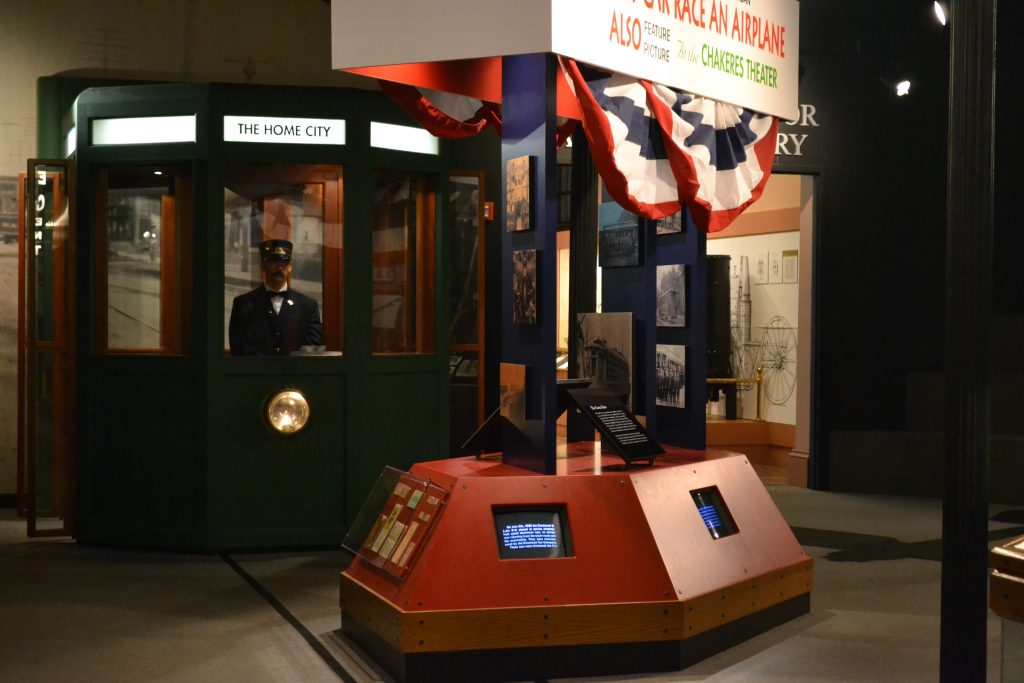
In the late 1890’s Springfield would come to be known as “The Home City” as facilities to assist organizations such as the Masons, Odd Fellows, and Knights of Pythias were built around town. In 1898, Snyder Park was created with land donated by the Snyder Brothers and remains today as a beautiful oasis close to the city’s center.
From here, I took a short break for lunch returning in 30 minutes to continue my visit to the Heritage Center which is covered in a second blog post titled, Politics, Theaters and Automobiles: Springfield, Ohio’s Rich History.
Are you a Springfield native or have family in the area? Have had the opportunity to visit the Heritage Center? I would love to hear about your connection to Springfield or about your visit to the Heritage Center if you would kindly leave a message in the comments section below. Many thanks for reading this post about my hometown of Springfield and wishing you many Happy Travels.
What to See and What to Do:
The Clark County Heritage Center
117 South Fountain Avenue
Springfield, Ohio 45502
Telephone: 937 324 0657
- Admission Fee: Free, and donations are welcome.
- Hours: Museum: Tuesday through Friday from 9AM to 4PM; Saturday from 9AM to 3PM. Closed on the following holidays: New Year’s Eve, New Year’s Day, Easter, 4th of July, Thanksgiving, Christmas Eve and Christmas Day
- Amenities: Bookstore and gift shop, guided tours, video presentation
- Length of Visit: 2 – 3 hours
- Tips for Your Visit: Donations recommended are Family: $10; Adults: $5 and Children: $3.
Where to Stay:
Courtyard Marriott Springfield
100 S. Fountain Avenue
Springfield, OH 45502
Telephone: 937 322 3600
Where to Eat:
Heart of Country Gift Shoppe and Teaberries Cafe
1600 E. Leffel Lane
Springfield, OH 45505
Telephone: 937 325 3030
I could spend hours strolling the Heart of Country Shoppe, but when I visit, I can’t wait to have lunch at Teaberries. I always start my lunch with a piece of yummy, moist orange bread. Known for their wide varieties of chicken salad sandwiches, I always revert to the House Favorite, the Midwest Delight, served on a butter croissant. If you have room, try their homemade carrot cake or peanut butter pie.
More favorite Springfield eateries:
- Schuler’s Donuts: Their chocolate cream-filled doughnut is their best seller…”home of homemade”. The bakery has several locations in Springfield.
- Simon Kenton Inn: This historical home is an inn, restaurant and entertainment venue. With great food, I love the atmosphere of the Simon Kenton Inn.
- Guerra’s Krazy Tacos: One of my favorite places to eat in Springfield, Guerra’s is known for their unique gourmet tacos.
- Salato Deli: I love stopping by this deli for their charcuterie board
- Le Torte Dolci Bakery; Located next to the Salato Deli, this European French bakery also serves amazing gelato.
- Mike & Rosie’s Deli: This staple of Springfield is located near the Wittenberg campus and I am extremely fond of their Reuben sandwich.
Where to Drink:
What to Read:
- The Book of Springfield, Ohio, 1906, by Springfield Commercial Club
- Springfield, Ohio: A Summary of Two Centuries, by Tom Dunham
- Ridgewood in the Country Club District, by Tamara K. Dallenbach
- Still Standing: A life of pain, adversity and perseverance, by James Cooper
- Hometown Killer, by Carol Rothgeb
Photo Guide for Springfield, Ohio:
- Hartman Rock Garden
- Westcott House, Frank Lloyd Wright House
- Glen Helen Nature Preserve in nearby Yellow Springs
- Heritage Center of Clark County
- Tecumseh Land Trust in nearby Yellow Springs
- Ohio Caverns in nearby Bellefontaine
- Oakes Quarry Park in nearby Fairborn, Ohio
